Can I install solar panels in my backyard? Installing solar panels in your backyard has become a popular trend, offering numerous benefits such as reducing energy bills and contributing to environmental sustainability. It’s a powerful way to harness renewable energy, directly tapping into the power of the sun. But as a homeowner, you might be wondering, “Can I install solar panels in my backyard?”
The short answer is, “Yes”. With today’s technological advancements, you can feasibly install solar panels in your backyard, given that you have adequate space and sunlight exposure. However, there are several factors that you need to consider before making the decision, including regulations, installation costs, and your specific energy needs.
This blog post aims to guide you through the process, providing insights into the feasibility of backyard solar panel installation. Over the next sections, we’ll delve into the key considerations, potential challenges, and steps to ensure a successful installation. With the right planning and knowledge, your backyard can become a source of clean, renewable energy.
What are the prerequisites for backyard installation?
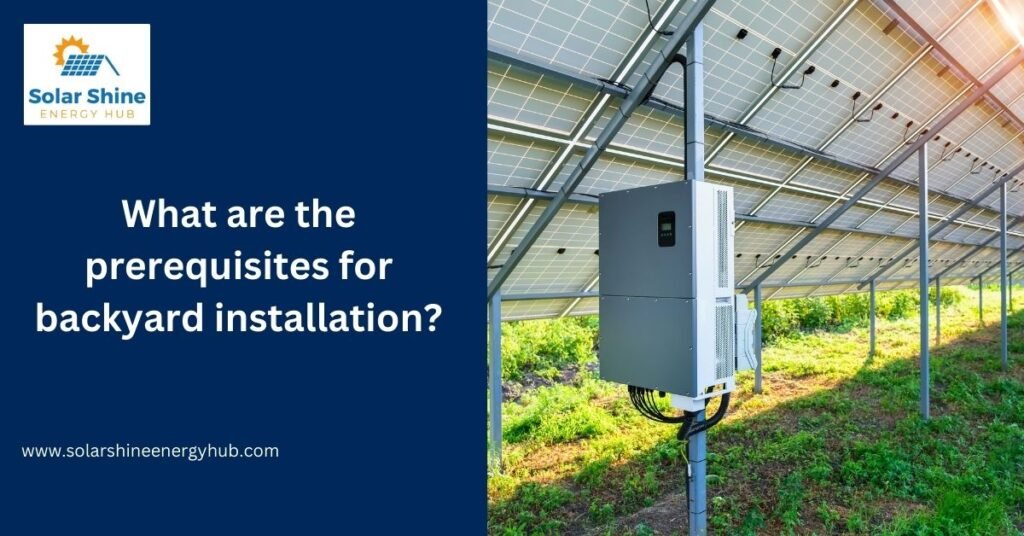
- First and foremost, sufficient space is crucial for the installation. A small, crowded backyard may not accommodate the necessary equipment or provide adequate sunlight exposure.
- Direct sunlight is a major prerequisite. Analyze your backyard’s sun exposure throughout the day to assess its suitability for solar panel installation.
- The orientation and tilt of your backyard also matter. South-facing spaces with a tilt angle of around 30-45 degrees are generally best for solar panel efficiency.
- The condition and material of the ground in your backyard can influence the installation process. A stable, non-sandy surface is ideal for mounting solar panels securely.
- Solar panel installation requires professional expertise. Ensure you have access to experienced solar installation services in your vicinity.
- Evaluate your energy requirements to determine the number and size of solar panels needed. A professional energy audit can provide precise calculations.
How does local regulation impact installation?
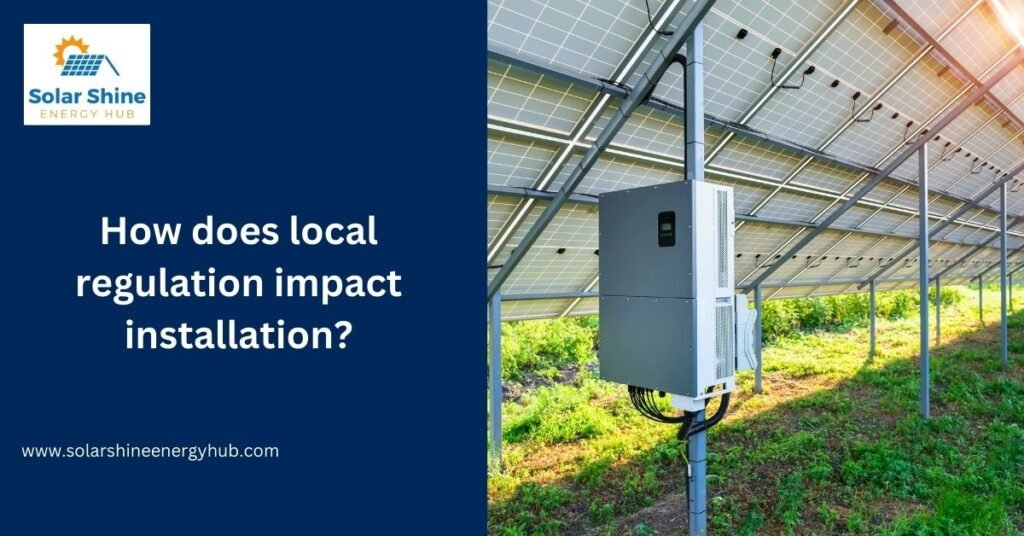
- Local regulations may impose restrictions on the size, height, and location of solar installations, which can limit the feasibility of backyard installations.
- Certain areas may require special permits or approvals for solar installations. Be sure to check with local authorities beforehand to ensure compliance.
- Some localities have “solar access laws” that protect your right to access sunlight, particularly useful if neighboring buildings or trees could potentially block sunlight.
- Homeowners’ associations (HOAs) can also play a role. While many states have laws preventing HOAs from outright banning solar installations, they can still impose certain design or aesthetic requirements.
- Net metering policies differ by region. These policies allow you to feed excess solar energy back into the grid, often for credit and are important to consider when calculating potential energy savings.
- Check for local incentives or rebates for solar installations. Many governments offer financial incentives to promote the use of renewable energy, which can significantly offset the initial installation costs.
What are the costs involved in installation?
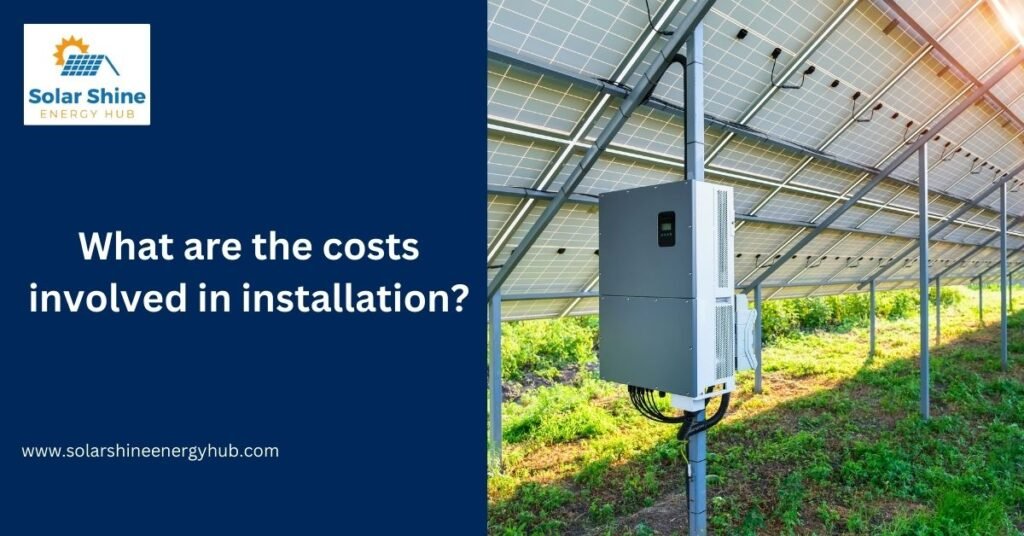
- Upfront costs encompass purchasing solar panels, inverters, batteries, wiring, and professional installation services. While substantial, these costs can be recouped over time through energy savings.
- Maintenance costs for solar panel systems are generally low, but should still be factored into your budget. This includes periodic cleaning and potential part replacements over the years.
- The cost of any necessary landscaping or structural modifications to your backyard for the installation should be considered. This can include tree trimming or ground leveling.
- Solar energy storage solutions may add to the initial cost. If you plan to store excess energy for use during nighttime or cloudy days, the price of batteries should be included in your budget.
- Insurance can add to the overall cost. It’s advisable to insure your solar system against potential damages such as storms or vandalism.
- Lastly, consider the cost of obtaining permits or approvals for your solar installation, if required by your local regulations.
How to assess your backyard’s solar potential?
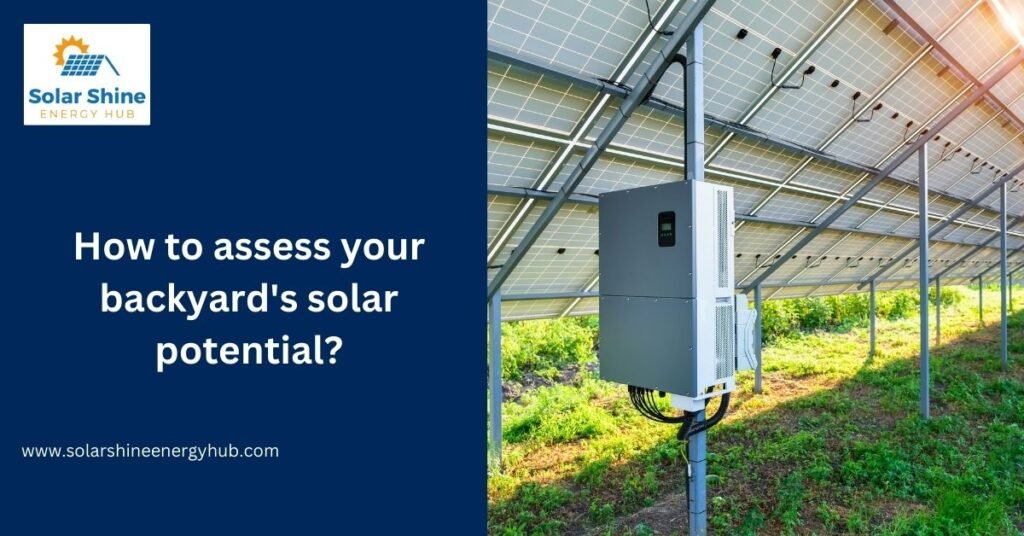
- A professional solar site assessment is a good starting point. This can provide key insights into your backyard’s sun exposure, potential shading issues, and optimal panel placement.
- Use online solar calculators or mapping services. These tools offer an initial approximation of your backyard’s solar potential, using data such as your location and energy consumption.
- Observe the sun’s path across your backyard during different times of the year. This can help identify any potential obstructions to sunlight like trees or buildings.
- Evaluate the size of the backyard and its ability to accommodate the necessary number of solar panels, keeping your energy needs in mind.
- The orientation of the backyard plays a major role. South-facing yards often receive the maximum sunlight, making them optimal for solar panel installations.
- Consider the structural integrity of the ground. A stable, non-sandy surface can securely hold the solar panel mounts and resist wind loads.
What are the challenges in backyard installation?
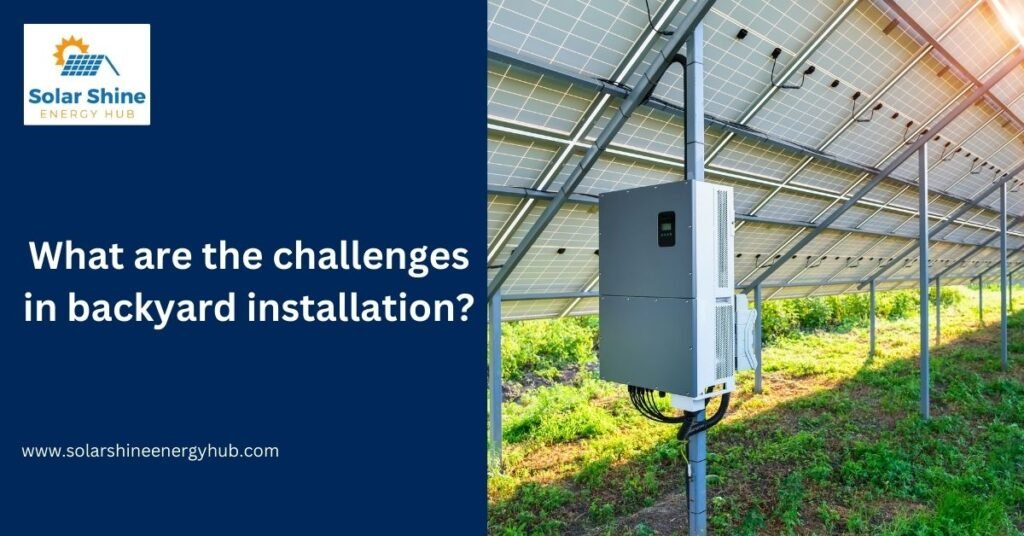
- One of the main challenges could be dealing with shade from trees, buildings, or other structures. This can reduce your solar panels’ efficiency and necessitate strategic placement or additional landscaping efforts.
- You may also face challenges relating to the terrain of your backyard. A sloped or uneven terrain could complicate installation and require additional groundwork.
- The size of your yard may be a constraint. If it’s too small, it may not accommodate the number of panels required to meet your energy needs.
- The orientation of your backyard could pose a challenge. If it doesn’t receive sufficient sunlight due to its geographical orientation, it may reduce the effectiveness of your solar panels.
- If your local area is prone to extreme weather conditions such as heavy snowfall or high winds, this could potentially damage your panels or complicate their maintenance.
- Lastly, you might encounter bureaucratic challenges. Navigating permits, regulations, or homeowners’ association rules can be complex and time-consuming.
Conclusion Can I install solar panels in my backyard
In conclusion, installing solar panels in your backyard is a sustainable and potentially cost-saving endeavor. However, it necessitates careful assessment of various factors such as local regulations, terrain, and sunlight exposure. Despite possible challenges, with the right planning and professional guidance, you can harness the power of the sun right from your backyard. Remember, your journey towards renewable energy is a step forward for you and our planet.